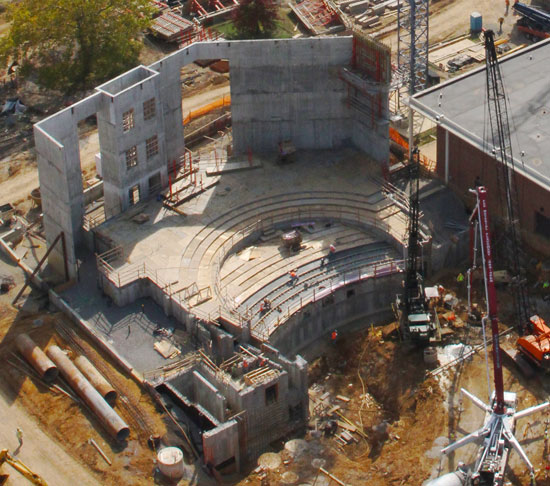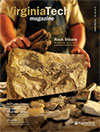 |
|
||||||
|
|
||||||||||||||||||||||||||||||||||||||||||||||||||||||||||||||||||||||||||||||||||||||||||||||
|
Grand Design
by DENISE YOUNG
Ruth Waalkes, executive director of the Center for the Arts at Virginia Tech, said the center will not only add to those existing strengths, but also help the university remain competitive with other top-tier institutions that already have a significant fine arts presence on campus. "You can't really separate the arts and creativity from other academic disciplines such as engineering," Waalkes said. "The center will connect the arts to other areas in meaningful ways." Construction of the center is under way at the intersection of Main Street and Alumni Mall. Slated for occupancy in late summer 2013, the center will host a fall season of preview events, followed by official dedication festivities in spring 2014.
The Vocal Arts and Music Festival, which will celebrate its third season in summer 2012, serves as a perfect example of how the center, even in its nascent stages, is blending university and community. The festival brings vocal coaches, musicians, and rising opera stars from around the world to Blacksburg for two weeks of master classes and world-class performances. The vocalists audition with International Vocal Arts Institute founders Joan Dornemann and Paul Nadler, both of the Metropolitan Opera, to vie for a spot in the festival. During the festival, the vocalists are immersed in rigorous training and rehearsals with the coaches—many of whom are legendary in the opera world—and perform almost nightly. Late in the campaign, the Center for the Arts was added to the list of capital projects. Private funding is expected to cover 30 percent of the project—or $28 million, of which about $18 million is still to be raised—along with 29 percent in state support and 41 percent from university and other sources, according to Waalkes. Having a strong arts presence on campus is vital for Virginia Tech's continued growth and success, Waalkes concluded. "We're continuing to think forward even as we celebrate this incredible milestone—the closing of a $1 billion campaign."
|
|
|||||||||||||||||||||||||||||||||||||||||||||||||||||||||||||||||||||||||||||||||||||||||||||
|
|
||||||||||||||||||||||||||||||||||||||||||||||||||||||||||||||||||||||||||||||||||||||||||||||



